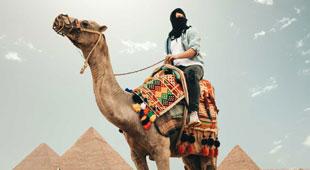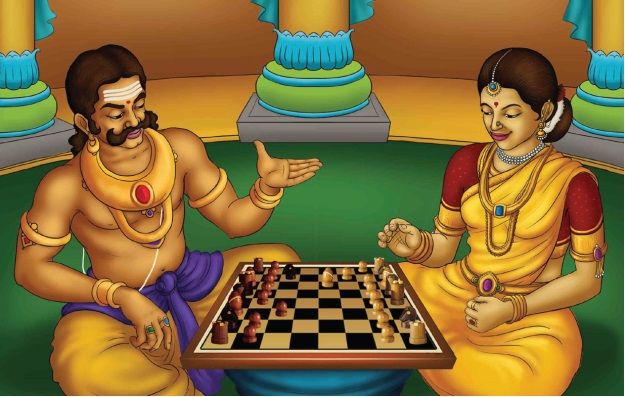25 Fascinating Facts About India
1. Linguistic Diversity
India contains over 1,600 spoken languages, making it one of the most linguistically diverse regions on Earth.
• 22 officially recognized languages in the Indian Constitution
• Hindi is spoken by about 40% of the population as a first language
• English serves as an associate official language for government and business
• Each state often has its own official language alongside Hindi and English
• Many Indians are multilingual, speaking 3-4 languages fluently
2. The Birthplace of Chess
Chess originated in India during the 6th century, initially called “Chaturanga.”
initially called “Chaturanga.”
• Chaturanga means “four divisions of the military” in Sanskrit
• The game represented infantry, cavalry, elephants, and chariotry
• Spread from India to Persia, then to the Islamic world and Europe
• Modern chess pieces evolved from the original Indian game pieces
• India continues to produce world-class chess players today
3. Mathematical Innovation: Zero
The concept of zero as both a placeholder and a number was developed by Indian mathematician Brahmagupta in the 7th century.
• Revolutionary concept that changed mathematics forever
• Enabled advanced calculations and scientific discoveries
• Brahmagupta also established rules for mathematical operations with zero
• This innovation spread to the Islamic world and then to Europe
• Foundation for modern mathematics, computer science, and technology
4. World’s Largest Film Industry
India’s film industry produces more movies annually than Hollywood.
• Bollywood is just one of several major Indian film industries
• Regional cinema in Tamil, Telugu, Bengali, Malayalam produces thousands of films yearly
• India produces over 1,800 films annually across all languages
• Employs millions of people directly and indirectly
• Indian films have global audiences, especially in South Asia, Middle East, and Africa
5. Ancient Urban Planning
The Indus Valley Civilization (2500-1900 BCE) featured some of the world’s first sophisticated urban planning.
• Cities like Harappa and Mohenjo-daro had advanced drainage systems
• Standardized weights, measures, and brick sizes across the civilization
• Well-planned streets laid out in grid patterns
• Public baths and granaries in city centers
• Advanced water management and sewage systems
6. The Origin of Yoga
Yoga originated in India over 5,000 years ago as both a physical and spiritual practice.
• The word “yoga” means “union” in Sanskrit
• Patanjali’s Yoga Sutras (400 CE) systematized yoga philosophy
• Eight-limbed path includes ethical guidelines, physical postures, and meditation
• Now practiced by millions worldwide for health and wellness
• UNESCO recognized yoga as an Intangible Cultural Heritage of Humanity
7. World’s Largest Postal Network
India operates the world’s largest postal network with over 150,000 post offices.
• Serves even the most remote villages and challenging terrain
• Mail delivered by foot, boat, helicopter, and other unique methods
• Post offices serve as banking and financial service centers in rural areas
• India Post employs over 400,000 people
• Covers 99% of India’s population despite geographical challenges
8. Six Distinct Seasons
India traditionally recognizes six seasons according to Hindu calendar systems.
• Spring (Vasant), Summer (Grishma), Monsoon (Varsha)
• Autumn (Sharad), Pre-winter (Hemant), Winter (Shishir)
• Monsoon season provides about 80% of annual rainfall
• Each season has cultural and agricultural significance
• Weather patterns directly affect agriculture and the economy
9. Ancient Medical System: Ayurveda
Ayurveda, one of the world’s oldest medical systems, originated in India over 3,000 years ago.
• Holistic approach focusing on mind, body, and spirit balance
• Uses herbs, diet, lifestyle, and treatments tailored to individual constitution
• Recognizes three doshas (body types): Vata, Pitta, Kapha
• Influences modern wellness practices and alternative medicine globally
• Still widely practiced alongside modern medicine in India
10. Massive Railway Network
India’s railway network spans over 67,000 kilometers and employs more than 1.3 million people.
• One of the world’s largest railway networks by track length
• Transports over 8 billion passengers annually
• Connects diverse regions from Kashmir to Kerala
• Fourth-largest railway network globally
• Critical for economic development and national integration
11. The Golden Temple’s Free Kitchen
The Golden Temple in Amritsar serves free meals to over 100,000 people daily.
• Open to all regardless of religion, caste, or background
• Tradition called “langar” emphasizes equality and service
• One of the world’s largest free kitchen operations
• Completely volunteer-run community service
• Serves simple vegetarian meals to maintain inclusivity
12. Global Spice Capital
India produces about 70% of the world’s spices.
• Over 50 different spices grown across various climatic zones
• Spice trade historically motivated European exploration and colonization
• Major spices include turmeric, cardamom, black pepper, cinnamon
• Spice cultivation provides livelihood to millions of farmers
• Indian spice exports reach over 180 countries worldwide
13. UNESCO World Heritage Sites
India has 38 UNESCO World Heritage Sites representing cultural and natural treasures.
• Iconic sites include Taj Mahal, Red Fort, and Qutb Minar
• Ancient cave paintings at Ajanta and Ellora showcase early art
• Natural sites like Western Ghats and Sundarbans represent biodiversity
• Archaeological sites reveal thousands of years of human civilization
• Each site tells unique stories of India’s rich heritage
14. Information Technology Powerhouse
India’s IT industry employs over 4 million people and drives global technology innovation.
• Cities like Bangalore, Hyderabad, Pune are major tech hubs
• Significant contributor to global software development and services
• Major multinational companies have established development centers in India
• Strong focus on software services, research and development
• Produces skilled technology professionals for global markets
15. Kumbh Mela: World’s Largest Gathering
The Kumbh Mela is considered the world’s largest peaceful gathering of humans.
• Held every 12 years in rotating sacred locations
• 2019 Kumbh Mela in Prayagraj attracted over 120 million visitors
• Temporary city created for the event, visible from space
• Pilgrims come for spiritual purification through ritual bathing
• Demonstrates incredible organizational capabilities and cultural devotion
16. Tiger Conservation Success
India is home to 70% of the world’s tiger population with successful conservation efforts.
• Tiger numbers increased from 1,400 in 2006 to over 2,600 today
• Project Tiger launched in 1973 established numerous reserves
• 50 tiger reserves across 18 states protect critical habitats
• Community involvement crucial for conservation success
• Symbol of successful wildlife conservation efforts
17. Cost-Effective Space Exploration
ISRO’s Mars Orbiter Mission cost just $74 million, demonstrating remarkable efficiency.
• First country to successfully reach Mars orbit on the first attempt
• Mission cost less than many Hollywood movie budgets
• Showcased India’s frugal engineering and innovation capabilities
• ISRO has launched satellites for many countries at competitive costs
• Chandrayaan missions have advanced lunar exploration
18. Ancient Mathematical Achievements
Traditional Indian mathematics introduced advanced concepts centuries before European mathematics.
• Negative numbers, decimal systems, and algebraic concepts
• Aryabhata calculated pi value and understood Earth’s rotation
• Brahmagupta established rules for zero and negative numbers
• Mathematical texts like Sulba Sutras contained geometric principles
• Influenced mathematical development across civilizations
19. World’s Longest Constitution
India’s constitution is the world’s longest written constitution.
• Contains 448 articles in 25 parts, plus 12 schedules
• Originally handwritten in Hindi and English
• Each page decorated by artists from Shantiniketan
• Took 2 years, 11 months, and 18 days to complete
• Balances federal structure with diverse regional needs
20. World’s Largest Democracy
India operates the world’s largest democracy with over 900 million eligible voters.
• Elections involve massive logistical operations across diverse terrain
• Electronic voting machines transported by elephant, boat, and helicopter
• Election Commission ensures free and fair elections
• Voting occurs in phases over several weeks
• Demonstrates commitment to democratic principles despite complexity
21. Incredible Biodiversity
India contains over 45,000 plant species and 91,000 animal species.
• Four of the world’s 36 biodiversity hotspots located in India
• Ecosystems range from tropical rainforests to alpine meadows
• Home to unique species like Bengal tiger, Indian elephant, snow leopard
• Western Ghats and Eastern Himalayas are biodiversity centers
• Marine biodiversity includes coral reefs and coastal ecosystems
22. Meditation Traditions
The ancient practice of meditation originated in India with evidence dating to 5,000 BCE.
• Archaeological evidence shows early meditative practices
• Various forms developed including Vipassana, Zen, and Transcendental Meditation
• Buddhist and Hindu traditions contributed different meditation techniques
• Now globally recognized for mental health and wellness benefits
• Scientific research validates traditional meditation practices
23. Ancient Textile Heritage
India’s textile industry spans over 4,000 years with sophisticated techniques.
• Traditional methods include block printing, tie-dyeing, and intricate embroidery
• Indian textiles were historically used as currency in international trade
• Each region developed distinctive styles and techniques
• Handloom sector still employs millions of artisans
• Modern textile industry combines traditional skills with contemporary technology
24. Extreme Weather Diversity
India experiences some of the world’s most extreme weather phenomena.
• Meghalaya receives over 400 inches of annual rainfall
• Thar Desert in Rajasthan represents arid extreme
• Himalayan regions experience alpine and glacial conditions
• Coastal areas face tropical cyclones and monsoons
• Climate diversity supports varied agriculture and ecosystems
25. Global Culinary Influence
India’s cuisine extends far beyond popular dishes, with each region offering distinct flavors.
• 29 states each have unique culinary traditions and specialties
• Sophisticated techniques include fermentation, spice blending, and vegetarian cooking
• Ayurvedic principles influence food preparation and combinations
• Indian diaspora has spread Indian cuisine globally
• Growing international recognition for health benefits and culinary sophistication














Leave feedback about this